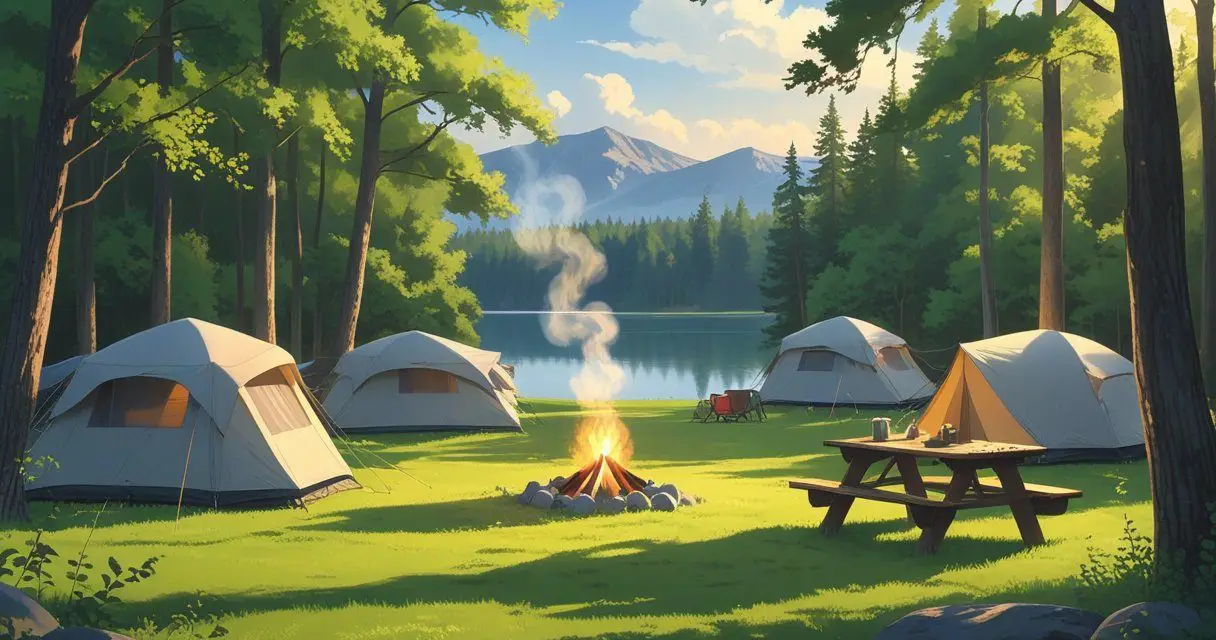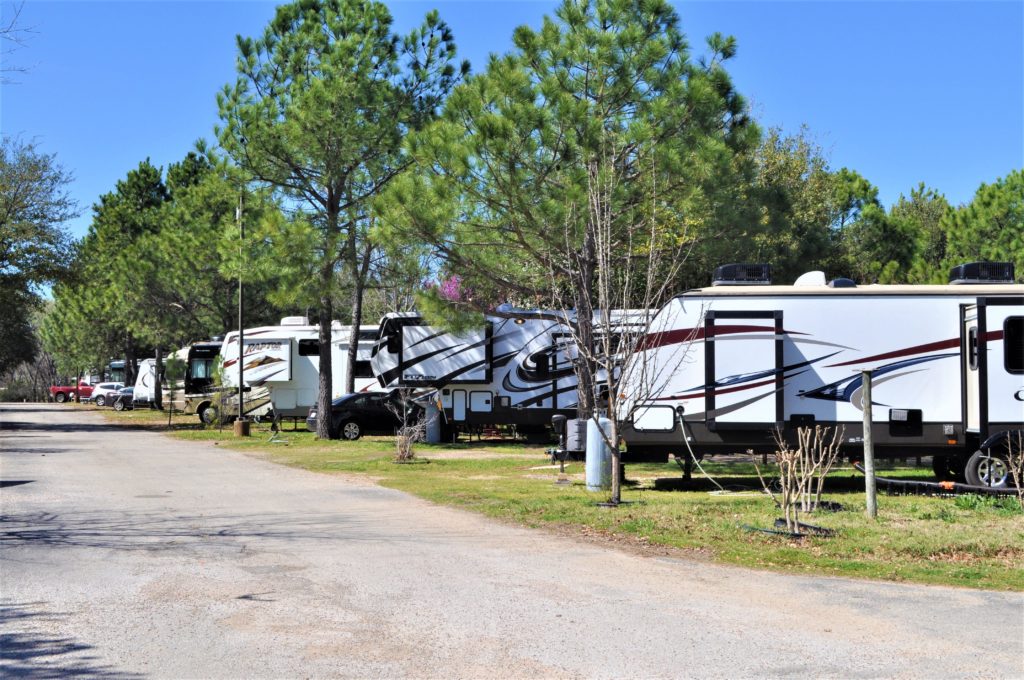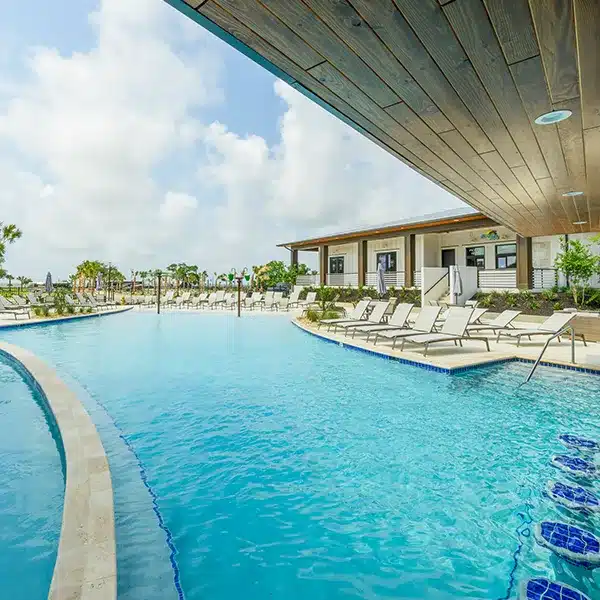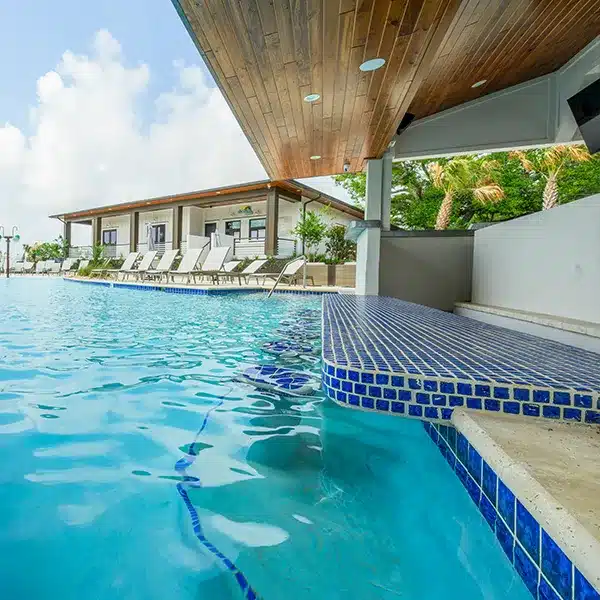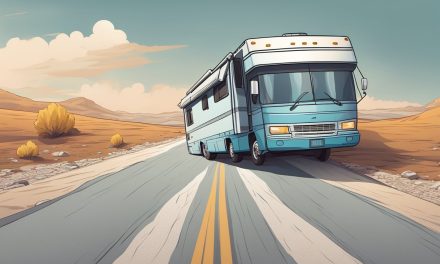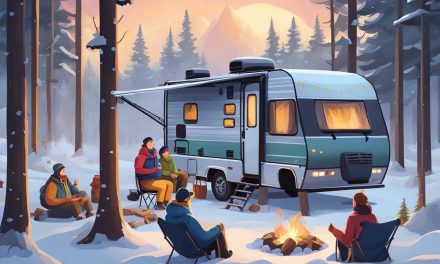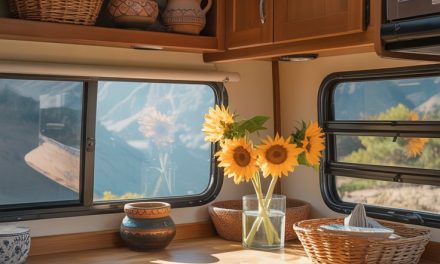Would you like to save this article?
The open road beckons to adventurers seeking the freedom and flexibility that RV travel offers, but choosing where to park your home-on-wheels can significantly impact both your experience and your wallet. The RV accommodation landscape features a variety of options that cater to different preferences, needs, and budgets – from rustic campgrounds nestled in nature to luxurious RV resorts offering resort-style amenities. Understanding the distinct characteristics, benefits, and potential drawbacks of campgrounds, RV parks, and RV resorts is essential for maximizing your travel experience while ensuring you get the best value for your hard-earned money. As we explore these three primary accommodation types, we’ll delve into their defining features, typical costs, and which might be the perfect fit for your specific travel style.
In This Article:
- ✓ Understanding the Key Differences
- ✓ Campgrounds: Back to Nature
- ✓ RV Parks: The Middle Ground
- ✓ RV Resorts: Premium Experiences
- ✓ Cost Comparison & Value Analysis
- ✓ Site Types: Pull-Through vs. Back-In
- ✓ Pros & Cons Breakdown
- ✓ Interactive Value Calculator
- ✓ How to Choose the Right Option
- ✓ Frequently Asked Questions
Understanding the Key Differences
At first glance, campgrounds, RV parks, and RV resorts might seem interchangeable, but they offer distinctly different experiences. Let’s explore what sets them apart:
| Feature | Campgrounds | RV Parks | RV Resorts |
|---|---|---|---|
| Primary Focus | Nature immersion, outdoor activities | Practical RV accommodation | Luxury amenities, community experience |
| Typical Setting | Natural surroundings, parks, forests | Near towns, highways, or attractions | Planned communities, often in desirable locations |
| Hookups | Limited or none (sometimes electric only) | Typically full hookups available | Premium full hookups, often 50-amp service |
| Amenities | Basic (restrooms, fire rings, picnic tables) | Moderate (laundry, showers, Wi-Fi) | Extensive (pools, fitness centers, planned activities) |
| Price Range | $20-$50/night | $30-$70/night | $60-$150+/night |
| Typical Stay Length | Short-term (often limit of 14 days) | Flexible (overnight to extended stays) | Often longer stays (some seasonal or annual) |
| Accessibility | May have limited access for larger rigs | Generally accommodates various sizes | Designed for all RV types, including luxury models |
Did You Know?
The terminology isn’t always consistent across the industry. Some places market themselves as “resorts” while offering more basic amenities, while others might understate their offerings by calling themselves “parks” despite having resort-quality facilities. Always research specific amenities and read reviews before booking.
Watch: Understanding the Differences
Video source: Between Mile Markers on YouTube
Campgrounds: Back to Nature
Campgrounds represent the most rustic option for RV travelers, placing emphasis on natural surroundings and outdoor activities rather than luxurious amenities. Often found in state or national parks, these locations typically offer a more immersive nature experience with access to hiking trails, fishing spots, and other outdoor recreation opportunities.
Key Characteristics:
- Natural Setting: Usually situated in forests, near lakes, or other natural areas
- Basic Amenities: May include vault toilets or basic restrooms, picnic tables, and fire rings
- Limited Hookups: Many offer electric only, or no hookups at all (dry camping)
- Spacious Sites: Often provide more space between campsites than commercial RV parks
- Outdoor Activities: Direct access to hiking, fishing, swimming, and wildlife viewing
- Stay Limitations: Many public campgrounds limit stays to 14 days or less
Typical Costs:
Campgrounds are typically the most budget-friendly option, especially those in public lands:
- National Park campgrounds: $20-$35 per night
- State Park campgrounds: $15-$45 per night
- National Forest/BLM campgrounds: $10-$25 per night
- Primitive camping on public lands: Often free (with limitations)
Perfect For:
- ✓ Nature enthusiasts
- ✓ Budget-conscious travelers
- ✓ Those seeking peace and quiet
- ✓ Outdoors activities enthusiasts
- ✓ Self-sufficient RVers with good boondocking setups
Campground Insider Tips:
Reservation Strategies:
Popular national park campgrounds can book up 6 months in advance. Set calendar reminders for reservation windows opening day, and be ready to book right when they open (typically 7 AM local time).
First-Come, First-Served:
Many public campgrounds reserve some sites for walk-ups. Arriving mid-week and early in the day (before noon) dramatically increases your chances of securing a spot.
Length Restrictions:
Check length restrictions carefully. Many older campgrounds can’t accommodate larger RVs. Some sites on public lands have maximum length restrictions of 25-30 feet.
Generator Rules:
Public campgrounds often have strict generator hours (typically 8 AM – 8 PM) or prohibit them entirely in some loops. Plan accordingly if you rely on power.
RV Parks: The Middle Ground
Perfect For:
- ✓ Convenience-oriented travelers
- ✓ Those needing reliable hookups
- ✓ Travelers seeking a balance of amenities and value
- ✓ Longer-term stays (weekly/monthly)
- ✓ People who want proximity to local attractions
RV parks strike a balance between rustic campgrounds and luxury RV resorts. They focus on providing the essential comforts and conveniences for RV living while maintaining reasonable rates. These establishments are designed specifically for recreational vehicles, with appropriate infrastructure and basic amenities.
Key Characteristics:
- Convenient Locations: Often situated near highways, tourist attractions, or towns
- Full Hookups: Most sites offer water, electric, and sewer connections
- Basic Amenities: Typically include restrooms, showers, laundry facilities, and Wi-Fi
- Community Spaces: May have a clubhouse, game room, or gathering area
- Moderate Spacing: Sites are generally closer together than campgrounds but offer adequate room
- Flexible Stays: Often accommodate both short and extended stays with weekly/monthly rates
Typical Costs:
RV parks generally fall in the mid-range price point:
- Daily rates: $30-$70 per night
- Weekly rates: $180-$420 (often discounted 10-15% from daily rate)
- Monthly rates: $450-$900 (varies significantly by location and season)
- Additional fees: Some charge extra for premium sites, 50-amp service, or pets
RV Park Value Considerations:
Location Premium
RV parks in popular tourist destinations or major cities can charge 30-50% more than those in less trafficked areas. Consider staying slightly outside major attractions and driving in.
Seasonal Variations
Prices can fluctuate dramatically based on season. For example, Florida RV parks may double their rates during winter months, while northern destinations might offer significant off-season discounts.
Length-of-Stay Value
The longer you stay, the better the value. Monthly rates often provide 40-50% savings compared to daily rates, making them excellent for slow travelers or working nomads.
Common Amenities in Standard RV Parks:
RV Resorts: Premium Experiences
RV resorts represent the luxury end of the RV accommodation spectrum, offering premium amenities and services that rival traditional vacation resorts. These upscale properties cater to RVers seeking comfort, convenience, and an enhanced vacation experience beyond just a place to park.
Key Characteristics:
- Resort-Style Amenities: Swimming pools, hot tubs, fitness centers, and recreational facilities
- Premium Hookups: 50-amp service, reliable Wi-Fi, cable TV, and sometimes fiber internet
- Landscaped Grounds: Manicured landscapes, paved sites, and attractive common areas
- Activities Program: Scheduled events, classes, and social gatherings
- Enhanced Services: Concierge, package acceptance, and sometimes on-site dining options
- Security Features: Often gated with controlled access and security patrols
Typical Costs:
RV resorts command premium prices for their enhanced offerings:
- Daily rates: $60-$150+ per night
- Weekly rates: $350-$900 (often with modest discounts)
- Monthly rates: $900-$2,300+ (location dependent)
- Seasonal rates: $3,000-$10,000+ for 3-6 month packages in prime locations
Perfect For:
- ✓ Luxury-oriented travelers
- ✓ Full-time RVers seeking community
- ✓ Snowbirds spending entire seasons
- ✓ Those who value amenities and activities
- ✓ RVers looking for a vacation destination itself
Premium Amenities in RV Resorts
Resort-Style Pools
Many luxury RV resorts feature resort-style pools with features like zero-entry, swim-up bars, and heated options for year-round enjoyment.
Organized Activities
From pickleball tournaments to craft classes and social hours, many resorts offer a full calendar of activities to keep guests engaged and foster community.
Premium Sites
Expect concrete pads, full patios, outdoor furniture, and sometimes private hot tubs or fire features at the most upscale resorts.
Value-Finding Tips for RV Resorts:
Off-Season Deals:
Many luxury resorts offer significant discounts during shoulder seasons. For example, desert resorts in Arizona might offer 30-50% off their winter rates during summer months.
Membership Programs:
Some luxury resort networks like Thousand Trails offer membership programs that can substantially reduce costs for frequent users, especially with their upgraded packages.
Last-Minute Availability:
High-end resorts sometimes offer last-minute deals to fill empty sites. Call directly within 1-2 days of your desired stay to inquire about special rates.
Extended Stay Value:
As seen in the video example, sometimes shifting just 50 miles inland from a coastal area can reduce monthly rates by $800 or more, even for a higher-quality resort.
Cost Comparison & Value Analysis
Understanding the true value of different RV accommodation options requires looking beyond the nightly rate. Let’s examine both direct costs and value considerations:
Average Cost Overview
| Type | Daily Rate | Weekly Rate | Monthly Rate | Additional Fees |
|---|---|---|---|---|
| Public Campgrounds | $15-$45 | N/A (14-day limits) | N/A | Entrance fees to parks ($5-$35) |
| Private Campgrounds | $25-$55 | $150-$330 | $400-$700 | Often charge for extra people |
| Standard RV Parks | $35-$70 | $210-$420 | $550-$900 | Premium for 50-amp, pull-through |
| RV Resorts | $65-$150+ | $390-$900 | $900-$2,300+ | Resort fees, premium sites, amenities |
Regional Price Variations
- High-Cost Regions: California coast, Florida (winter), National Park gateway communities
- Mid-Range Regions: Mountain states, Great Lakes, Atlantic coast
- Budget-Friendly Regions: Midwest, South Central, rural areas nationwide
Seasonal Considerations
- Peak Season Premiums: 30-100% higher rates during local high seasons
- Shoulder Season Values: 20-40% discounts just before/after peak times
- Off-Season Bargains: Up to 60% discounts during low demand periods
Value Insight:
As mentioned in the featured video, sometimes an inland luxury RV resort can cost $800 less per month than a more basic RV park closer to the beach. The tradeoff is typically location convenience versus amenities and overall experience quality.
Hidden Costs & Value Considerations
Campgrounds
While offering lower nightly rates, consider these factors:
- • Limited hookups may require generator use (fuel costs)
- • Possible need for additional water supplies
- • More frequent dump station visits (time & fuel)
- • Often further from conveniences (added travel costs)
- • May require park entrance fees in addition to camping fees
RV Parks
Mid-range pricing with these considerations:
- • Full hookups eliminate some operational costs
- • Convenient locations can reduce transportation expenses
- • Laundry facilities available but usually coin-operated
- • Basic Wi-Fi included but may need cell data for reliable internet
- • Often charge extra for premium sites, 50-amp service
RV Resorts
Higher base rates but consider these value factors:
- • Amenities like pools/fitness eliminate need for external memberships
- • Social activities can replace paid entertainment
- • Better internet may eliminate need for cellular data plans
- • Resort facilities can make the park the destination itself
- • Possible resort fees or charges for premium amenities
Value-Based Decision Making
When evaluating the best value for your specific situation, consider these factors beyond just the nightly rate:
Length of Stay Impact
For longer stays:
- Weekly rates typically save 10-15% over daily rates
- Monthly rates can save 30-50% over daily rates
- Seasonal rates offer the largest discounts (often 60-70% off daily equivalents)
The longer your stay, the more worthwhile resort amenities become, as they effectively serve as your neighborhood and community.
Travel Style Compatibility
- For active explorers who use their RV as a base camp, a simple campground or RV park may offer better value.
- For those seeking relaxation with minimal driving, an RV resort’s amenities might justify higher costs.
- For working nomads, reliable internet and comfortable workspaces at resorts might be essential, not optional.
- For families with children, resorts with pools and activities can replace costly entertainment outings.
Site Types: Pull-Through vs. Back-In
Beyond choosing between a campground, RV park, or resort, you’ll also encounter different site types. Understanding these options can impact both your experience and your budget:
Pull-Through Sites
What are they?
Pull-through sites allow you to drive straight in and straight out without having to back up your RV. You enter from one end and exit from the other.
Advantages
- Easier for beginners or those uncomfortable with backing up
- Faster and more convenient setup and departure
- Reduces risk of maneuvering damage
- Better for larger rigs and those with towed vehicles
- Often more spacious than back-in sites
Disadvantages
- Usually command a price premium ($5-15/night more)
- Often located in less private areas of parks
- Frequently situated closer to roads with more traffic
- Limited availability (especially in older/public campgrounds)
- May have less shade or natural features
Typical Availability
- Common in commercial RV parks and resorts
- Limited in public campgrounds and older facilities
- More prevalent at overnight/transit parks
- Often the first sites to book up
Back-In Sites
What are they?
Back-in sites require you to reverse your RV into the camping spot. You’ll typically pull past the site, then back in at an angle.
Advantages
- Generally more affordable than pull-through sites
- Often more private and secluded
- Frequently offer better views or natural settings
- More abundant in most campgrounds
- Can accommodate a wider range of RV sizes and types
Disadvantages
- Requires skill and practice to back in properly
- More challenging for beginners or solo travelers
- May require unhitching towed vehicles first
- Potentially more stressful arrival and departure
- Some tight spots may be difficult for larger rigs
Typical Availability
- Predominant in public campgrounds and state/national parks
- Common in all types of RV accommodations
- Often represent 60-80% of available sites
- Typically more available for last-minute bookings
Value Considerations for Site Types:
Cost Differences
Pull-through sites typically cost $5-15 more per night than comparable back-in sites. For a two-week stay, that’s a potential savings of $70-210 by choosing back-in sites.
Skill Investment
Developing back-in skills can significantly expand your camping options and save money. Practice in empty parking lots before your trip to build confidence.
Equipment Considerations
Backup cameras, wireless trailer cameras, and walkie-talkies for a spotter can make back-in sites much more manageable, potentially paying for themselves in site savings.
Pro Tip: “Pull-In” Sites for Motorhomes
Some RV parks offer a third option specifically for motorhomes: pull-in sites. Unlike pull-through sites, these are effectively back-in sites where motorhomes are encouraged to pull in forward.
Advantages:
- Allows motorhome windshields to face the view
- Easier access to hookups for motorhomes
- Simplified arrival process
- Often priced between back-in and pull-through sites
Availability:
These are less common but worth asking about, especially at resorts with premium views. Some waterfront or view sites are specifically designed this way to maximize the motorhome experience.
Note that this setup is not ideal for travel trailers or fifth wheels, as it would position the main door facing away from the site.
Pros & Cons Breakdown
Let’s examine the benefits and drawbacks of each RV accommodation type to help you make an informed decision:
Campground Pros
- Most Budget-Friendly: Generally the least expensive option, especially public campgrounds.
- Natural Settings: Typically located in scenic areas with direct access to outdoor activities.
- Spacious Sites: Often offer more distance between neighbors than commercial options.
- Authentic Experience: Provides a more traditional camping experience with campfires and outdoor focus.
- Peace and Quiet: Generally less crowded and noisy, with fewer amenities creating distractions.
- Wildlife Opportunities: Better chances to observe local wildlife in natural habitats.
- Dark Skies: Less light pollution for stargazing and night sky viewing.
Campground Cons
- Limited or No Hookups: Many offer only electric or no hookups at all, requiring self-sufficiency.
- Reservation Challenges: Popular campgrounds can book up 6+ months in advance.
- Stay Limitations: Most public campgrounds limit stays to 14 days or less.
- Basic Facilities: Restrooms and shower facilities may be primitive or limited.
- Poor Connectivity: Often have minimal or no cell coverage and Wi-Fi.
- Size Restrictions: Many cannot accommodate larger RVs over 35-40 feet.
- Distance from Services: Often located far from shopping, dining, and other conveniences.
Ideal For:
Campgrounds are best for nature enthusiasts, budget-conscious travelers, those with smaller or more self-contained RVs, and travelers seeking an authentic outdoor experience over convenience and luxury.
RV Park Pros
- Full Hookups: Reliable access to water, electric, and sewer connections.
- Convenient Locations: Often situated near attractions, highways, or towns.
- Balanced Value: Reasonable prices for essential amenities and services.
- Flexible Stay Options: Daily, weekly, and monthly rates with fewer length-of-stay restrictions.
- Basic Amenities: Laundry facilities, showers, and sometimes recreational features.
- Size Accommodation: Generally able to handle a wider range of RV sizes.
- Community Balance: Some social opportunities without the activity-focused atmosphere of resorts.
RV Park Cons
- Less Natural Setting: Often more developed and less integrated with nature than campgrounds.
- Variable Quality: Significant differences in upkeep and management between parks.
- Closer Spacing: Sites typically closer together than campgrounds, offering less privacy.
- Fewer Recreation Options: Limited on-site activities compared to resorts.
- Inconsistent Wi-Fi: May offer internet that’s unreliable during peak usage times.
- Road Noise: Convenient locations often mean proximity to highways or busy roads.
- Extra Fees: Some charge additional for pets, extra people, or premium services.
Ideal For:
RV parks are best for travelers seeking a practical balance of convenience and value, those needing reliable hookups, people who want access to local attractions and services, and RVers planning medium to longer stays in one location.
RV Resort Pros
- Premium Amenities: Resort-style pools, fitness centers, clubhouses, and recreational facilities.
- Social Activities: Organized events, classes, and gatherings create community.
- Higher-Quality Facilities: Well-maintained bathhouses, laundry rooms, and common areas.
- Enhanced Sites: Typically larger pads, often with patios, furniture, and landscaping.
- Reliable Utilities: Better electrical service, water pressure, and internet connectivity.
- Security Features: Often gated with better lighting and sometimes security staff.
- Destination Experience: The resort itself can be the vacation, not just a place to stay.
RV Resort Cons
- Higher Cost: Significantly more expensive than other options, especially for short stays.
- More Rules: Often have stricter regulations about RV age, appearance, and behavior.
- Less Privacy: Community focus and organized activities can feel intrusive for some.
- “Resort Fees”: Some charge additional fees for amenity access or activities.
- Age Restrictions: Some are 55+ communities with limitations for families with children.
- Further from Nature: May feel more like a neighborhood than a natural camping experience.
- Advance Planning Required: Premium resorts often book up far in advance, especially in peak seasons.
Ideal For:
RV resorts are best for travelers seeking a luxury experience, full-time RVers wanting community, snowbirds spending entire seasons in one location, and those who view the accommodation itself as a key part of their vacation experience rather than just a place to sleep.
Interactive Value Calculator
Use this calculator to help determine which type of RV accommodation might offer the best value for your specific situation and preferences:
Trip Details
Preferences & Priorities
Rate the importance of each factor (1 = Not Important, 5 = Very Important):
How to Choose the Right Option
Here’s a practical decision-making framework to help you select the best RV accommodation for your specific needs:
Step 1: Assess Your Priorities
Start by honestly evaluating what matters most to you for this specific trip:
- Is budget your primary concern?
- Are you seeking specific amenities?
- How important is a natural setting?
- Do you need good internet connectivity?
- Are you looking for social opportunities?
- How much time will you spend at your site vs. exploring?
Step 2: Consider Practical Factors
Several practical considerations can help narrow your options:
- Length of stay (longer stays may justify resorts)
- RV size and hookup requirements
- Season and weather conditions
- Proximity to your planned activities
- Whether you’re working remotely during your stay
- Special needs or accessibility requirements
Step 3: Research Options
Thoroughly investigate potential accommodations:
- Read recent reviews (within past 6 months)
- Check site maps for size and spacing
- Look at actual guest photos, not marketing images
- Call to ask about current amenities and conditions
- Verify any advertised features (like “free Wi-Fi”)
- Ask about unexpected fees or charges
Decision Matrix: Quick Reference Guide
| If you want… | Best Choice | Considerations |
|---|---|---|
| Maximum budget savings | Campground | Be prepared for limited hookups and facilities |
| Immersion in nature | Campground | Check reservation windows 6+ months in advance |
| Balance of cost and convenience | RV Park | Quality varies widely; research thoroughly |
| Full hookups with reasonable rates | RV Park | Weekly/monthly rates offer significant savings |
| Premium amenities | RV Resort | Sometimes available at lower rates in off-season |
| Social activities and community | RV Resort | Consider how much you’ll use the amenities |
| Extended stay (1+ months) | RV Park or Resort | Monthly discounts of 40-50% can make resorts affordable |
| Remote work necessities | RV Resort or RV Park | Always have cellular backup for Wi-Fi |
Expert Advice: The Hybrid Approach
Many experienced RVers use a hybrid approach to maximize both experience and value:
The “Bookend” Strategy
Stay at more affordable campgrounds or RV parks during transit days at the beginning and end of your trip, but splurge on a resort for the main portion of your vacation.
The “Alternating” Approach
Mix stays between rustic campgrounds for nature immersion and resorts for “recharging” with amenities. This provides variety while managing costs.
The “Location-Based” Decision
Choose your accommodation type based on the location. In areas where nature is the attraction, opt for campgrounds. In cities or activity hubs, choose convenience-focused RV parks.
The “Length-of-Stay” Method
For overnight or quick 2-3 day stops, choose simpler accommodations. For longer stays where you’ll spend significant time at your site, invest in higher-quality options with more amenities.
Frequently Asked Questions
Final Thoughts
Choosing between campgrounds, RV parks, and RV resorts is ultimately about finding the right match for your specific travel needs, preferences, and budget. Each option has its place in the RV lifestyle, and many experienced travelers use a mix of all three depending on their destination and goals for each leg of their journey.
While campgrounds offer natural immersion and budget-friendly rates, RV parks provide a practical balance of amenities and value, and RV resorts deliver premium experiences with extensive facilities. Rather than viewing one as inherently “better” than others, consider each as a tool in your travel toolkit, appropriate for different situations.
Perhaps the most surprising insight, as highlighted in our featured video, is that the highest-priced option isn’t always the worst value. Sometimes an inland luxury resort can cost substantially less than a basic park closer to popular attractions. By being flexible with location, timing, and length of stay, you can often enjoy premium experiences at surprisingly reasonable rates.
As you plan your RV adventures, remember that the perfect accommodation balances your priorities for that specific trip. Whether you’re seeking solitude in nature, convenient access to attractions, or a resort experience that’s a destination in itself, the wide variety of RV accommodation options ensures there’s something perfect for every traveler and every journey.
Most importantly, don’t forget that the freedom to choose different experiences for different trips is one of the greatest joys of the RV lifestyle. Happy travels!

